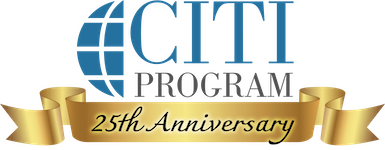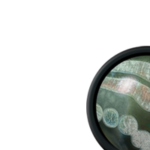Overview
As of March 17, 2025, the U.S. National Institutes of Health (NIH) appears to still plan to implement the “U.S. Government Policy for Oversight of Dual Use Research of Concern and Pathogens with Enhanced Pandemic Potential” (The New Policy) on May 6, 2025 [1]. Specific details and requirements regarding implementation timelines, applicable grants and cooperative agreement activity codes, and other NIH funding processes, including contracts and other transactions, are still forthcoming from the NIH [2].
Introduction
The New Policy was designed to bring together the 2012 “Policy for Oversight of Life Sciences, Dual Use Research of Concern”, the 2014 “U.S. Government Policy for Institutional Oversight of Life Sciences Dual Use Research of Concern” and the 2017 “Recommended Policy Guidance for Departmental Development of Review Mechanisms for Potential Pandemic Pathogen Care and Oversight (P3CO)”. The primary intent of The New Policy is to create a federal consolidated oversight system for federal funds used to research biological agents and toxins that are a potential risk to national security and public health. Institutions should use The New Policy in conjunction with federal regulations such as the Federal Select Agent Program [3]. The New Policy does not supersede the Federal Select Agent Program or other federal biosafety or biosecurity regulations. Research involving any quantity of toxins on the Biological Select Agents and Toxin list, including regulated select toxins below the Select Agent Regulations permissible toxin amount, will now be subject to the New Policy[4].
The New Policy was created intentionally to be flexible but contains comprehensive changes. This approach was taken as not all naturally occurring viruses that cause human diseases are pathogens with pandemic potential (PPPs) in their naturally occurring forms; however, through experimentation, there may be reason to believe these pathogens may adapt, modify, and spread in an uncontrolled manner. The New Policy defines Enhanced Pandemic Potential Pathogens (PEPP) as those that result from experimentation with PPP. There is a potential that transmissibility or virulence can be disrupted through experimentation to create a potential threat to public health.
Scope of the Changes
The scope of the New Policy has broadened the requirements for institutions receiving U.S. Government (USG) funds for research. Some of the significant changes include:
- The number of agents and toxins increased to 91 from 15.
- Oversight requirement for Category 1 research involving DURC and Category 2 research involving pathogens with enhanced pandemic potential (PEPP)
- All Select Agents and Toxins, regardless of quantity
- All Risk Group 4 and Risk Group 3 are listed in the NIH Guidelines for Research Involving Recombinant or Synthetic Nucleic Acid Molecules (NIH Guidelines) [5]
- Any additional biological agents identified in future updates to the DURC/PEPP Policy Implementation Guidance
- Establish an Institutional Review Entity (IRE) and Institutional Contact for Dual Research (ICDUR) that follows the composition and responsibilities outlined in the policy.
- Communicate and establish infrastructure between the IRE and the researched to ensure that the risk-benefit analysis and risk mitigation plan approved by NIH are in place before starting or continuing work.
- All NIH applicants and recipients working through their Principal Investigator (PD/PI) and Senior/Key Personnel (researchers) named in the application will be required to conduct proposal stage assessments and ongoing assessments throughout the research life cycle to continually assess changes to determine if changes in the research fall under Category 1 and/or Category 2.
- All awarded research must be carried out, and oversight provided according to the approved plan.
- If the researcher considers their research to potentially fall into Category 1 or Category 2 research, the NIH will notify them to provide official documentation. The researcher will be required to work with their institution’s IRE to determine if it meets the definition of Category 1, Category 2, or neither and have risk-benefit assessment and risk mitigation plans.
- Minimum submission to NIH for Category 1 research will be an annual report, and for Category 2 research semi-annual reports.
Time to Assess, Plan, and Communicate
Now is the time for institutions to take stock of all their research activities that may potentially fall under The New Policy. This includes current research, any planned research, and any research involving Select Agents, regardless of the number of agents. The NIH is anticipated to apply the New Policy to both current and future protocols.
Areas within the institution that may assist with gathering this data include the Environmental, Health, and Safety Office and/or Biosafety Office, as they may have access to the current active research protocols. These institutions’ offices are often assigned the responsibility for registering with the Select Agents with U.S. Department of Agriculture (USDA) and U.S. Department of Health and Human Services (HHS). This is a good source of information for those researchers who are currently working or possess Select Agents below the current threshold amounts and were not impacted by the old DURC policies and P3CO.
Review the institution’s current research infrastructure and research approval process. Can the current infrastructure support the New Policy requirements, including the IRE and ICDUR requirements and research notifications? Identify what changes need to be made, including additional resources in terms of people and funding.
Review any current documentation supporting research risk-benefit analysis and risk mitigation plans to ensure they meet NIH approval requirements for work to proceed.
Identify and establish a communication and training process to share information concerning The New Policy with all the individuals directly involved in research or supporting research and funding activities, including newly hired faculty and staff.
DURC Training
CITI Program offers the Dual Use Research of Concern course as part of the Biosafety and Biosecurity series.
Summary
The New Policy was created intentionally to be comprehensive and flexible. Stay up to date by subscribing to the Notice of NIH Policy Changes, as future Guide Notices will contain more details and requirements on the applicable NIH grants, contracts, and other transactions. Remember that policy notices published in the NIH Guide for Grants and Contracts supersede the information provided in the NIH Grants Policy Statement.
References
1. United States Government Policy for Oversight of Dual Use Research of Concern and Pathogens with Enhanced Pandemic Potential May 2024 https://aspr.hhs.gov/S3/Documents/USG-Policy-for-Oversight-of-DURC-and-PEPP-May2024-508.pdf
2. NIH Implementation of the US Government Policy for Oversight of Dual Use Research of Concern (DURC) and Pathogens with Enhanced Pandemic Potential (PEPP) https://grants.nih.gov/grants/guide/notice-files/NOT-OD-25-061.html
3. Federal Select Agent Program https://www.selectagents.gov/regulations/index.htm
4. Administration of Strategic Preparedness and Response https://aspr.hhs.gov/S3/Pages/DURC-and-PEPP-FAQ.aspx
5. NIH Guidelines for Research Involving Recombinant or Synthetic Nucleic Acid Molecules https://osp.od.nih.gov/wp-content/uploads/NIH_Guidelines.htm







